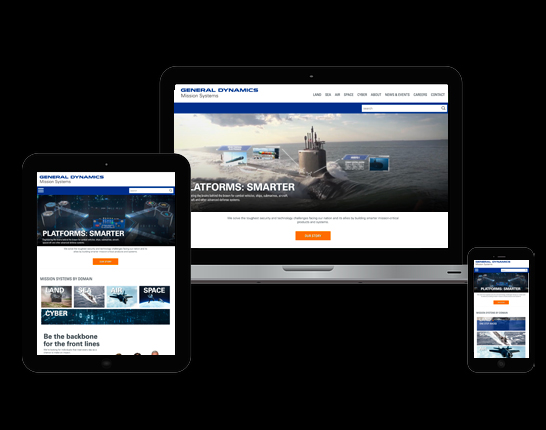Role: Lead Information Architect, Lead UX Strategy
Problem
Many brands had been acquired over the years and each had their websites and content authoring platforms. These acquisitions resulted in a very disjointed experience. Our team was tasked with creating one platform on Sitecore to serve six sites for an American and Canadian defense company. We were also tasked with combining the content of all six sites to create a cohesive story. It was a ten-month engagement.
Goals
This was to be a content management platform on Sitecore. This would allow each business unit to create and maintain its content while creating a consistent experience. This was a first-phase project which meant that the focus was on creating a strategy, the Sitecore platform and components, and training for the business units. I was typically only involved in the first phases of projects when the problems were the largest and information architecture and strategy skills were required.
Pain Points
- Four different content management systems were previously used.
- Each experience had its unique design, logo, approach, and branding.
- The project needed to be run agile, but the client and our subject major experts were unfamiliar with the agile process.
Team
- Lead Information Architect, Lead UX Designer
- Digital Strategist
- Creative Director
- Copy Writing
- 2 – UI Designers
- Project Manager
- 2 – Client Engagement
- 10 – Developers
- 2 – Quality Insurance
- Platform trainer
Client Supplied
- Marketing Brochures
- Brand Guidelines
- Business units, their owners, and their products
Research
Thankfully this project did have a research phase. In my experience, not all projects had a research phase due to budget and timing. I had the opportunity to create and deliver:
- Competitive audit
- Business requirements matrix
- Strategy for the Information Architecture Present and Future
- Component strategy
- Initial documentation for training on how to use the components
Personas
This project had interesting personas. After reviewing roles/job functions across multiple lines of business, I identified emerging patterns in the needs of each unique role. As a result, the personas fell within five primary audience types:
- Executive Decision Maker
- Idea/Innovation Lead
- New Recruit
- Support Lead
- Purchase Agent
I conducted interviews with individuals that best represented each persona. The client provided many of the participants in a visit to the east coast. I had to get creative with some of the information. I found that Indeed is an excellent source for learning about other professions.
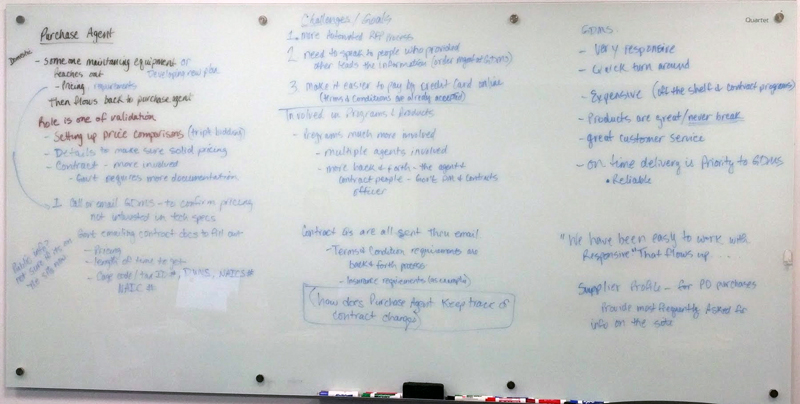
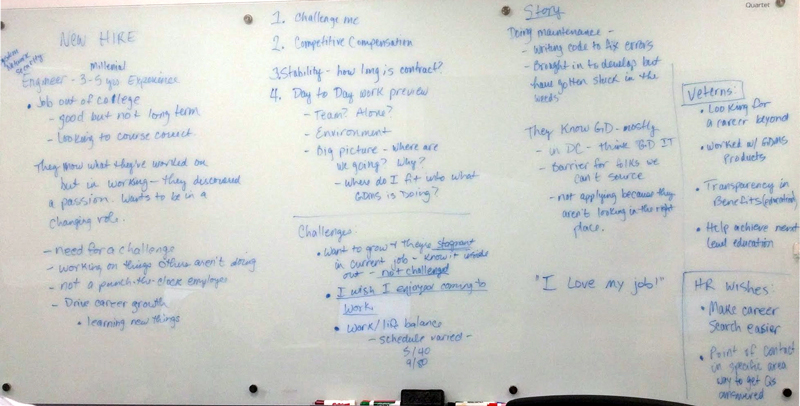
After the interviews were conducted I gathered our notes onto whiteboards to begin distilling the information.


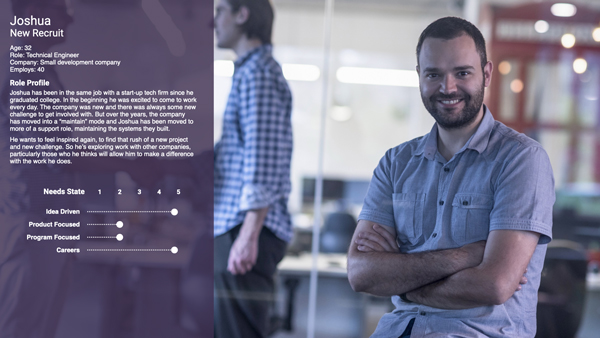

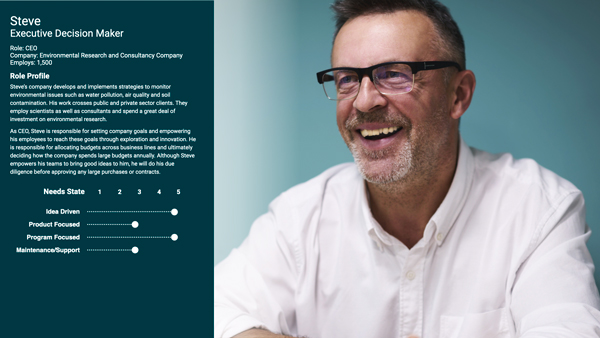
Competitive and Contextual Analysis
My competitive analysis was brief and focused on information architecture. I organized the main navigation into simple visuals to start the conversation on how to organize the content. I also created a brief sitemap for each, although not all are shown here. Organizing the content was the biggest challenge, as 40% of the products fell within more than one category, but five personas were a lot to support.
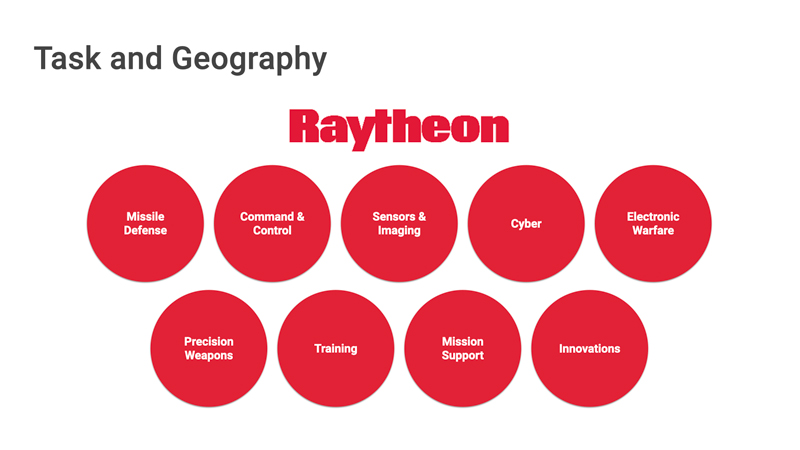
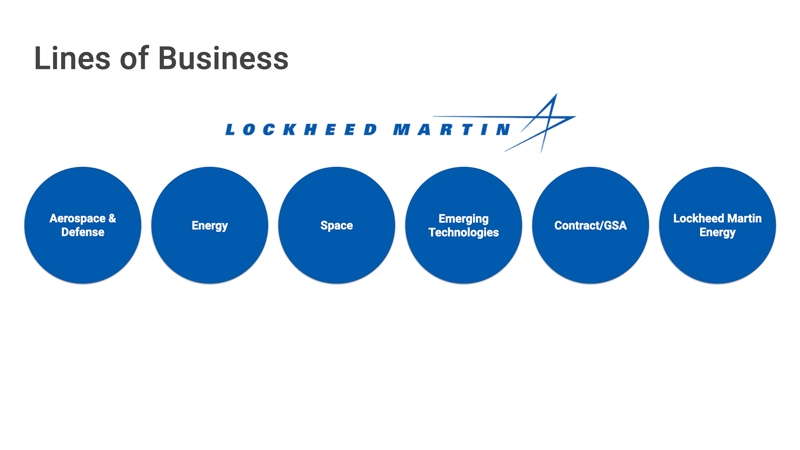
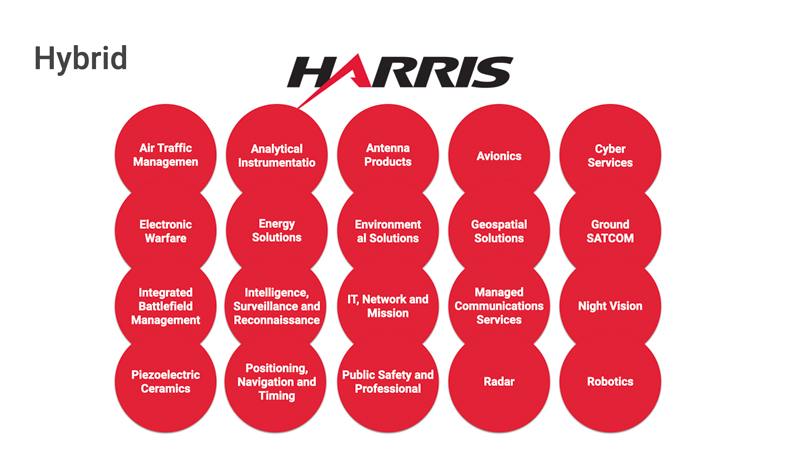
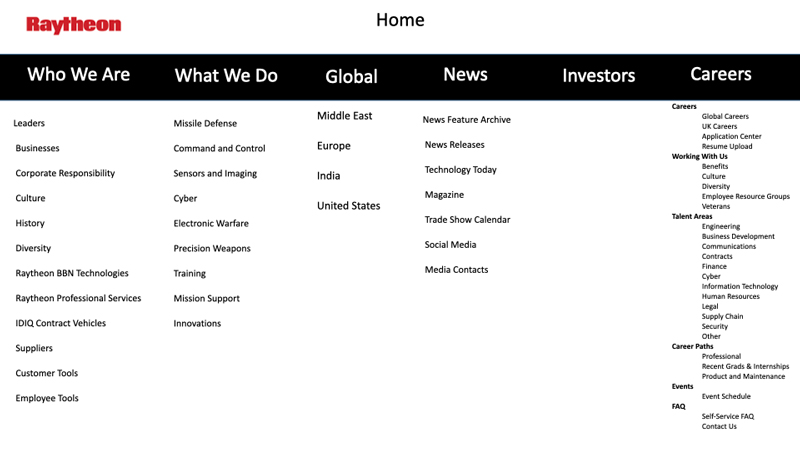
Information Architecture
This was the most interesting and challenging information architecture I had worked on. I started the IA work with a very intense content audit. This was done primarily by hand and double-checked with a site crawler. There were six separate sites to document. The end experience could easily be hundreds of product pages.
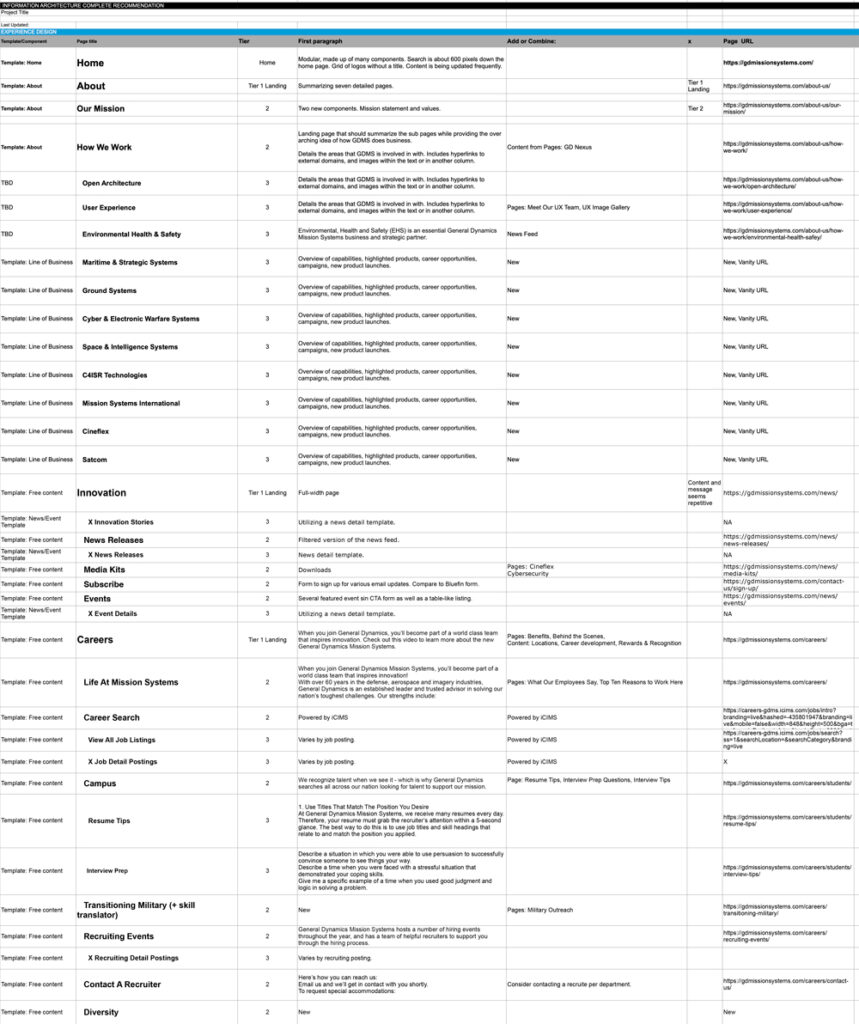
There were two ideas for how to organize the content and best tell a story. Storytelling was very important to this client. I planned and led a two-day in-person workshop to test the two concepts. One was based on geography and the other based on tasks. The geography concept provided more storytelling opportunities but created a 40% redundancy of products. The task-based concept was a 15% redundancy but the client and team were struggling to see the opportunity for storytelling. The goal was to come out of the workshop with one concept. There wasn’t time for any more deliberation.
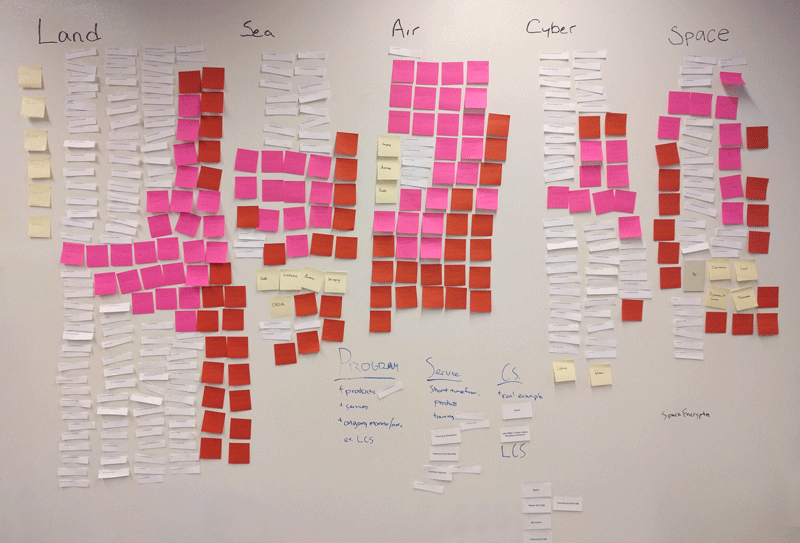
Race to the Product Workshop
I am a huge fan of the book Innovation Games. It is a great resource for planning workshops. Based on knowledge from this book I planned to have the team test both concepts using a reverse card sort. To make it more engaging I planned on splitting the group into teams and timing them.
I printed off cards for the first-tier categories, second-tier categories, and a sampling of products. Everything was pinned up. For each “click” I placed a piece of paper hiding that category. I then split the room up into two different teams and each team was given several products to find within concept A, and then concept B. I timed the group and listened to their questions as they worked together. I then had the teams switch concepts. Both teams felt like the Task concept was easier to navigate than the Geography.
The workshop kicked-off with a recap of the previously presented work including:
- Content Audit
- Competitive and Contextual Review
- Stakeholder Interviews
- Persona Workshops
- Analytics
- Definition of an Information Architecture

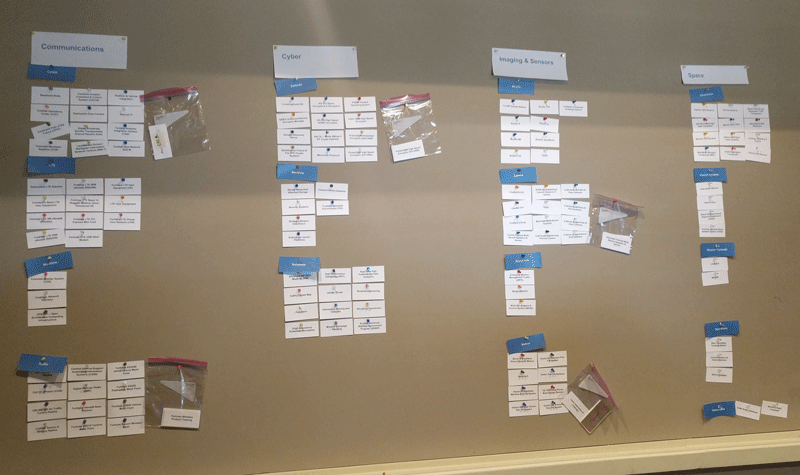
Sprints: Platform Design
The majority of the team was located in the same office, but the client was spread across two states. The clients’ technical expertise in the products was vital to this project. InVision was used to keep everyone informed and organized. My expectations for the functionality were detailed in Jira where everyone including the clients could access the information.
Each sprint I had key templates and components that needed to be created, approved and documented for both the client, development, and the soon authors. I documented the design system as I went because it would double as a training guide. As components were developed I assisted in testing their “Authorability” in Sitecore. Throughout the planning, the author’s ability to make additions and changes was a large consideration, balanced precariously with scope.
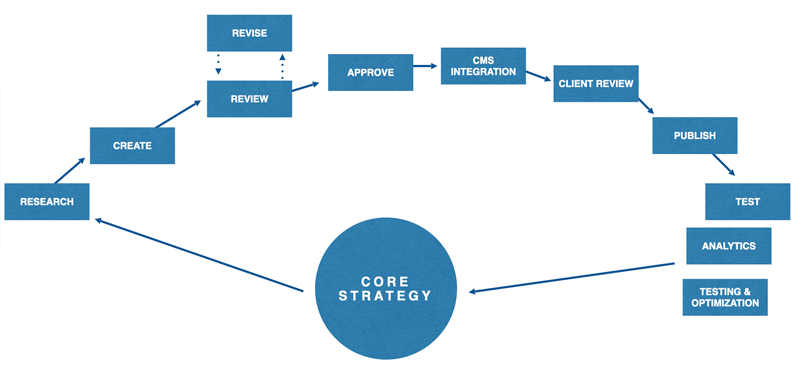
Navigation Improvements
The following were improvements made to the new architecture. The drop-down navigation was easy to edit in the Sitecore author role, but guidelines were created to assist the site authors.
- A “featured area” that can be used to present new or highly trafficked pages.
- Programs were a new concept and path.
- The ability to easily author the drop-down navigation.
- Increased ease of use on mobile and tablet.
- Consistency in visual browsing navigation.
- For Search Results, images and filters were added.
- Consistency
A Category now displays its subcategories higher and consistently on the page as well as a large number of flexible components to tell a story about that category. There is now a Subcategory template that provides a mix of story and tactical information consistently.
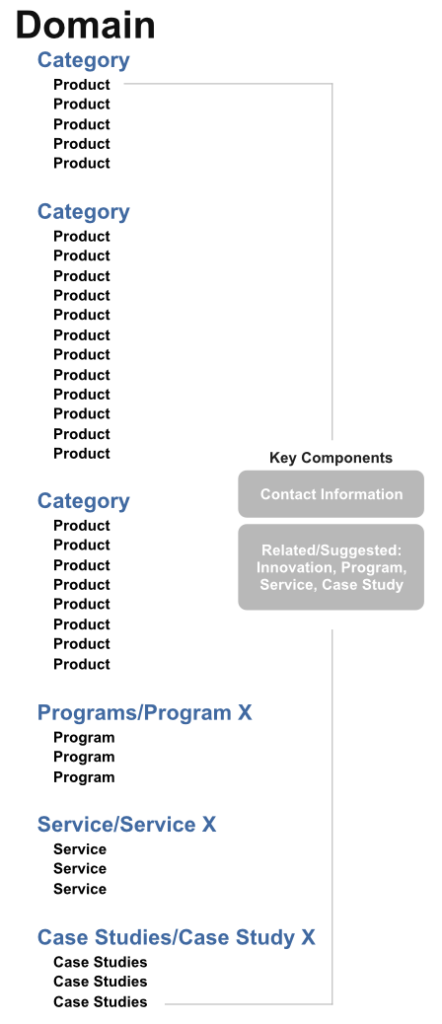
New Templates
- Land, Sea, Air, Cyber, and Space were opportunities for thought leadership and programs, delivering on the needs of all personas.
- Creating a Program template was a huge improvement because previously Programs were treated like a Category creating a very confusing user path. Programs were so vital to the business they also deserved their template and a chance to be part of the storytelling experience.
- The Lines of the Business template is a highly customizable experience that allows each business a chance to tell their story.
- Several highly flexible components create calls to action throughout the site as well as lead generation.
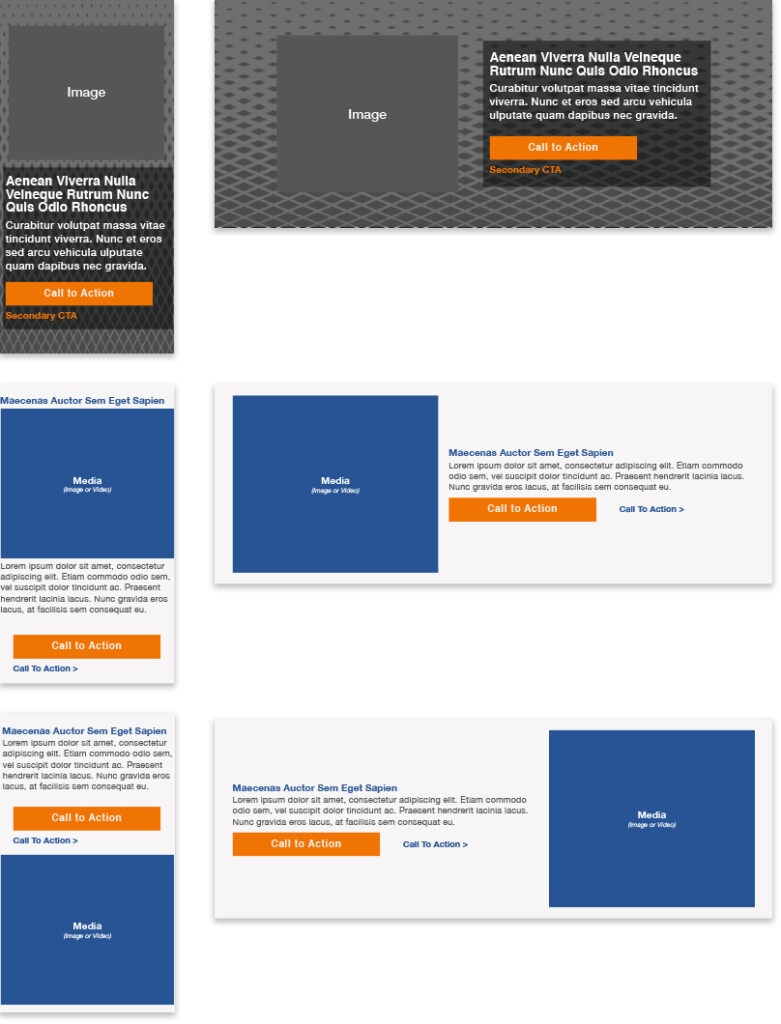
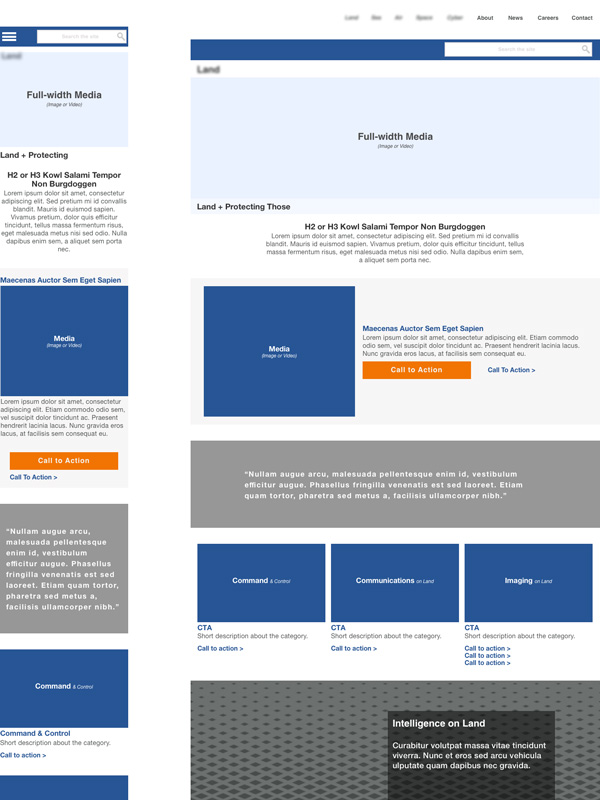
Measuring Success
I always feel good about the result when the client signs on for another phase. The second phase revolved mainly around content improvements and continued “authorability”.
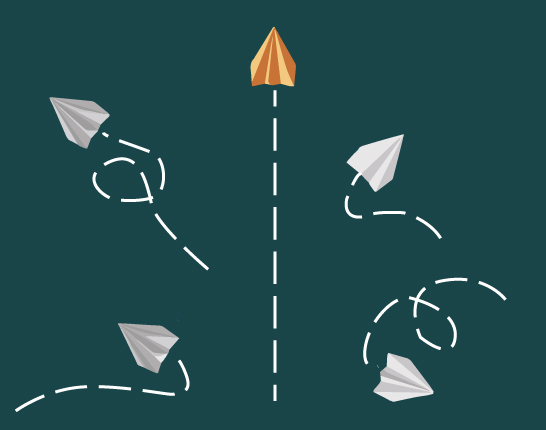
Leading Agile
A continuous integration continuous development online ordering platform needed a Lead Designer. The platform was B2B and provided an interesting research approach.

Life-Saving Equipment
A demo app that could be run on an iPad was needed to demonstrate the equipment’s ease of use and its life-saving scenarios.
